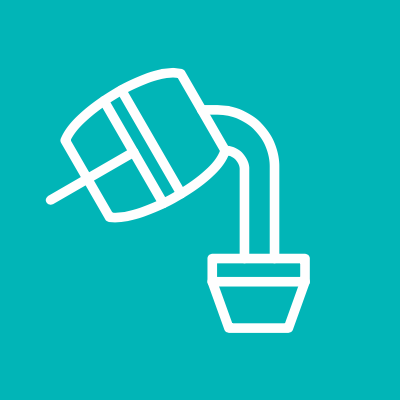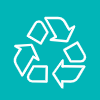SERVICES - OFFSHORE
The Decom Cockpit offers a variety of services for offshore projects. From contractual support to the whole value chain management. A few of our main services for offshore projects can be found below. Get in touch with us to check which services can be tailored to your assets.

BASELINE MEASUREMENTS
DecomCockpit starts with a thorough analysis of the assets. This typically starts by analysing the as-built dossiers, the maintenance logs and the inspection reports. Our technical team will make an initial review of the current status with a few points highlighted for further analysis.
The consortium will work conform a Quality Assurance and Quality Control (QAQC) plan. QAQC refers to the processes and activities that are used to ensure that the quality of a product meets specific requirements. In the wind energy industry, QAQC is an important aspect of the design, construction, maintenance, and end of life strategy of wind turbines and/ or wind farms. In this program 2 types are distinguished:
- Inspections: Inspections are used to verify that a product or service meets specified requirements. This may include visual inspections, functional testing, and measurement of critical dimensions.
- Testing: Testing is used to verify that a product and/ or service meets specified performance requirements. This may include laboratory testing, field testing, and simulations.
The overall goal of QAQC is to ensure that the projects is executed safely, reliable, and efficient, and that they meet all relevant standards and regulations on technical, ecological and circularity topics. The project starts with a baseline measurement at the location. The inspection has several goals:
- Status of marine growth on the monopile
- Marine growth and species survey on the scour protection before decommissioning
- Quality Inspection of the flange ovality, monopile welding’s and secondary steel
- Site assessment
- Identify locations for measurement devices
The information will be used to prepare and optimize the vibration tool and ABIT tool process and identify the technical, health, safety and environmental risks. Also the baseline measurement of the scour protection can be used to compare the effect (sound, sedimentation, vibration) of the decommissioning to the marine life on the scour protection.
All above mentioned inspections will be used to optimize the work method statements and preparation of the mission offshore. Also, the QC inspections will be used to prepare the material passport and circular strategies of material processing. All information gathered is then put together in our Circular Strategy Model.
CIRCULAR STRATEGY MODEL
With the gathered data our circularity advisors and engineers will write a material strategy model (MSM). This model has the goal to retain the highest possible value of a component. The model is based on the medium to high-value circular R strategies, starting at Re-use and ending at Recycling. Incineration or landfilling of materials is not considered in this model.


RE-USE, REPAIR, REFURBISHMENT
During the development of this model our team is actively sourcing at our European connections such as utilities, original equipment manufacturers, their supply chain and the secondhand marketplaces to get each component re-used or refurbished if possible. When there is no buyer or when the material has a poor quality, it will be send for recycling at one of the partners.
METAL REMANUFACTURING & RECYCLING
Metal recycling can be widely interpreted. In the sector we see a huge quality difference in recycling and therefore as DecomCockpit we want to clarify our standards.
4.1 Monopile. We start with the transportation of the monopile (and if needed the secondary steel) to the site of Sif in Rotterdam since the quay of Sif is long and deep enough for the offshore installation vessels ships to berth. Offloading and transport is carried out according to the normal procedures of Sif at their hub. The process than starts with the cleaning of the monopile by removing marine growth and other contaminations. Secondly, the secondary steel (J-tubes, platforms, ladders etc.) is removed. Thirdly, the monopile is cut into easier transportable pieces and delivered directly to the steel plate factory that manufactures the steel plates. After remanufacturing the plates these are than transported back to Sif to be used again in new products.
4.2 Turbine. For the metals that come from the wind turbine we start with removing contaminating components. After this we do a first sorting of the different metals before resizing. After sorting we decrease the size of the material to sizes required by steel manufacturers. An additional sorting is necessary to obtain such a high standard that delivering the material as secondary raw material instead of waste is possible. With this process we can guarantee that the material is re-used in its highest value possible.


BLADE RECYCLING
In 2018, CRC started with testing composite recycling methods. One of the most important goals was to reduce the CO2-emissions of the blade recycling process. After succeeding in this, our next goal is to scale up to larger volumes already from 2023 onwards, always optimizing our production line with the batches that already have been processed. We can cut blades to smaller pieces of 25-50cm, after which they go into our production line to grind them into very small particles (as far as we know, we can mill to the smallest fraction known world-wide). Also, we remove the thermoplastic resin during this process to make future recycling easier. The removed resin will be transformed into oil with a pyrolysis process, while the particles function as great feedstock for new composites.
PRODUCTS
Our responsibility does not end with processing the composite. Together with the asset-owner, and/or the manufacturer we will search for new ways to integrate the outcome of step 5 in the production of new wind turbines. We already started small with building furniture, tiles and more small composite products for the asset owner. However, we are also searching for ways (together with the manufacturer) to bring back the composites in turbines, for instance to the nacelle housing.


DOCUMENTATION
Probably one of the most important products in material processing is clear documentation of the materials. It already starts at step 1 (the inspection) and step 2 (Circular Strategy Model). At those steps we map all the materials and the quality of them. However, during the decommissioning process, materials can get another end-of-life solution. This needs to be mapped and clearly documented for the asset owner. You can best compare this to an as-built dossier. The documentation is the transparent material passport that proofs the destination of the materials and its circular solution.







